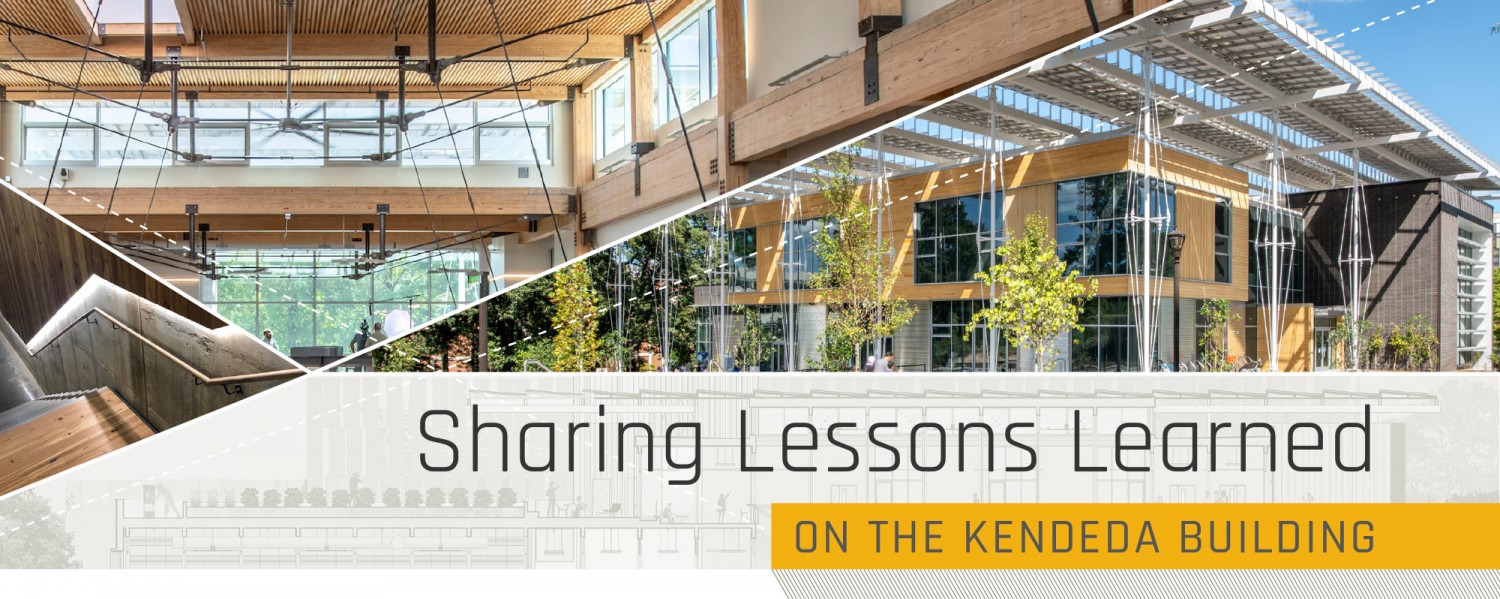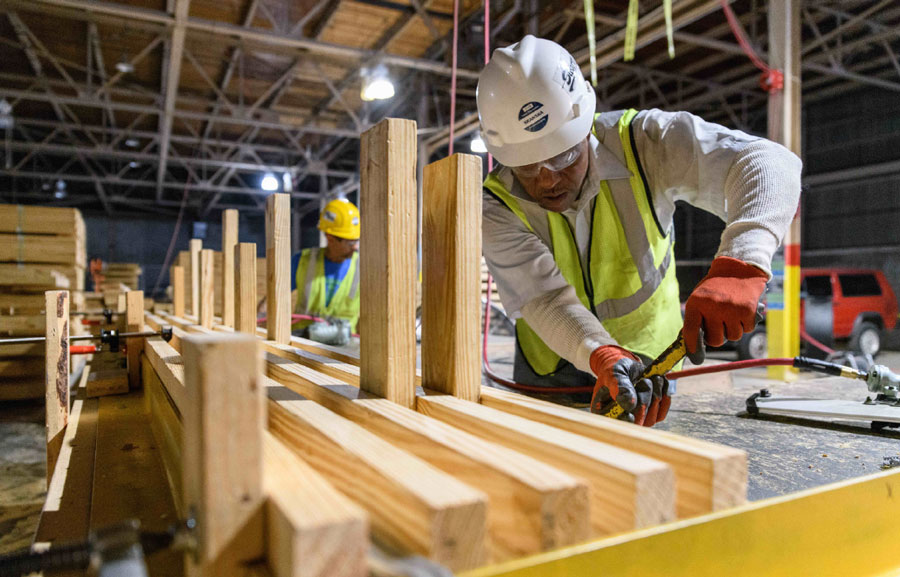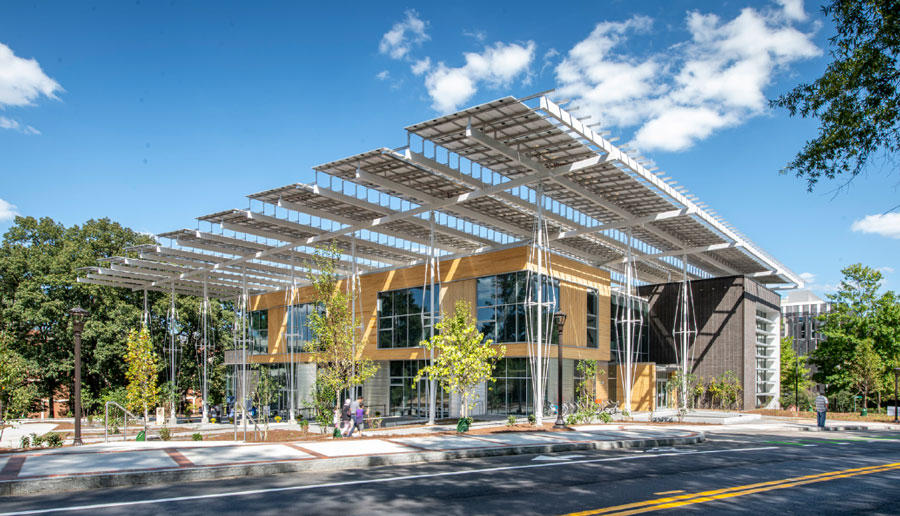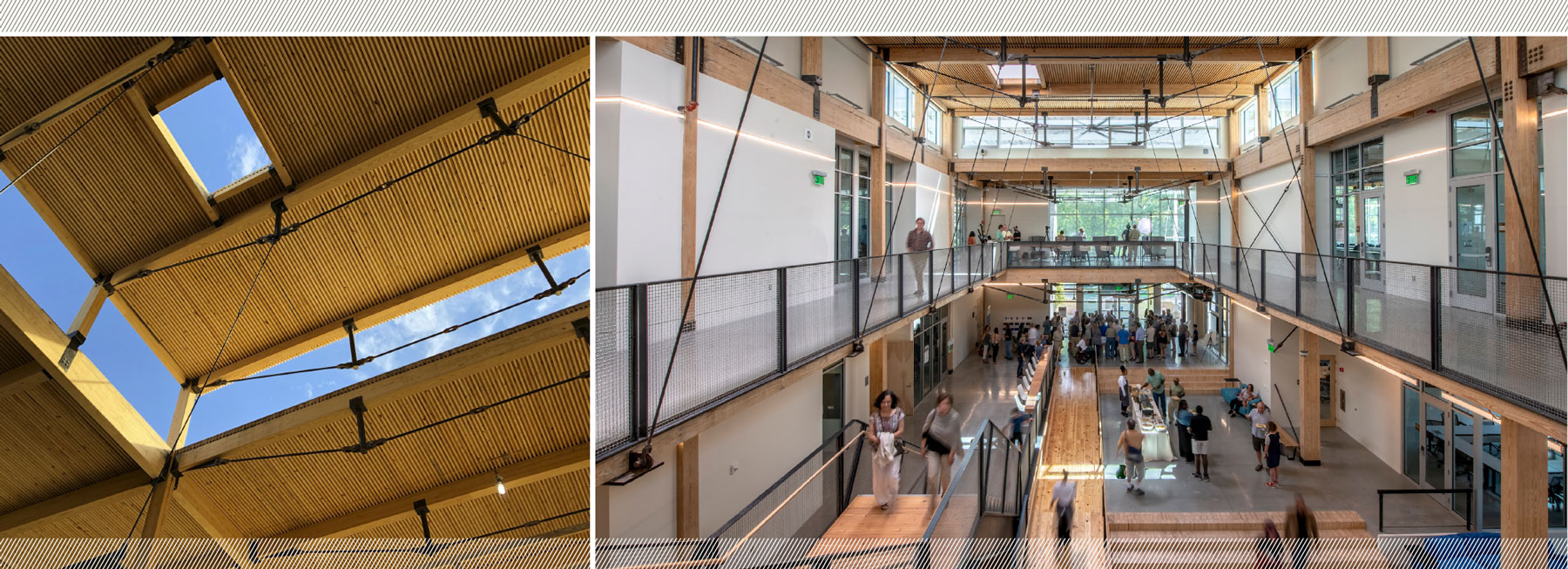
The Kendeda Building for Innovative Sustainable Design is complete with plans to welcome students in January 2020. Once certified under the Living Building Challenge, which requires adherence to some of the most stringent building performance standards in the world, The Kendeda Building will be considered the most environmentally advanced education and research center ever constructed in the Southeast.
But the real goal is to actually not be the only Living Building Challenge project in the Southeast for long. Rather, one of the project’s primary objectives is to share lessons learned with those who own, design, and construct buildings so that they too can carry these principles forward and encourage others to take the challenge in their communities.
As Georgia Tech takes over the keys to The Kendeda Building, it provides an opportunity for
stakeholders to reflect on the project and share their perspective so that others can learn from
their experience and apply this knowledge to future projects.
Video: The Kendeda Building for Innovative Sustainable Design opens on Georgia Tech's campus.

From the Designers
Margaret Sprug
The Miller Hull Partnership
The most important lesson is that even in the challenging climate of the southeastern United
States, these types of Living Buildings are possible. They can and should be built
everywhere. We should have all been doing this (designing and building Living Buildings)
sooner in our lifetimes.
Alissa Kingsley
Lord Aeck Sargent
Every project partner worked extremely hard to create a truly integrated team, but there is
always room for improvement on future projects. In order to achieve Living Building
certification, defining project goals early in the process and communicating those goals to
the entire project team is crucial. The project goals are at the center of both designing and
constructing the building and should be revisited at every stage of the project by the entire
team — including the subcontractors. In the end, this means establishing consistent and open
communication and coordination between all team members.
Matt Kikosicki
The Miller Hull Partnership
Don’t underestimate the importance of preconstruction meetings and mockups. “Business as
usual” will not get us to success on high-performance projects. If we are using unfamiliar
products or systems, it is critical that subs and everyone involved understand these elements
and how one scope of work fits in with other trades and the overall project.
Joshua Gassman
Lord Aeck Sargent
I would suggest paying more attention to embodied energy. We hit the big items like structure,
which represents 75% of embodied carbon in most buildings, but it would have been great to
focus on the biggest pieces of the remaining 25%. For example, while we used the most
effective insulation that was free of red list chemicals, it still represents a major
contributor to the embodied energy in the building.

Workers prepare wooden building components for The Kendeda Building.

From the Builder
Jimmy Mitchell
Skanska USA
On the next Living Building Challenge project like The Kendeda Building, I would encourage the
team to be more focused with all the options considered early in the process. Since this is
the first project of this nature in the Southeast, our entire team spent a great deal of
effort and time analyzing the multiple options because we wanted to get things right for a hot
and humid climate. For example, with the mechanical system, we considered four different
systems, each with unique attributes. We considered technologies that were off the shelf, in
use somewhere else, and academic in nature. Ultimately, we took two systems through a detailed
design and cost exercise to select the right system. I am not saying we wouldn’t want to do
this type of analysis on the next project but, moving forward, we have the experience and
tools to be much more focused and, hopefully, more efficient on the next Living Building
Challenge project in the region.
Matt Williams
Skanska USA
I would advocate for more time and flexibility during the pre-construction phase of the
project to allow for a more complete design and more accurate budgeting. Without a full
building design, seemingly small changes can have huge and unintended impacts. And when
traditional value engineering methods are applied to a fully integrated building like The
Kendeda Building, people need to understand that status quo, cost-saving measures don’t always
work. For example, we saved money up front by changing the elevator manufacturer late in the
design process. However, this change created space planning issues because the new elevator
had different control requirements. As a result, we had to build a new room that was not
originally planned, and the inspector required us to get a variance. These changes ended up
costing more than the initial savings and nearly delayed the project’s opening. These types of
“cost-saving measures” also don’t allow the design team to solidify a final direction and
focus on detailing, leaving too many decisions to be made after construction has started.

Exterior of the completed Kendeda Building.

From the Owner
John DuCongé
Georgia Tech
Anyone pursuing a Living Building Challenge certified project should take the time to tap into
the experience of other building owners who have gone through the process. The insight from
those teams, including the operations and maintenance staff, is invaluable and can help you
with the learning curve. I’d also suggest active engagement with those who will be running the
building – again, operations and maintenance staff – at the start of design process to
leverage their insight and help them better understand the basis for the design. Their
commitment is critical to achieving certification.
Shan Arora
Georgia Tech
The potable water system for The Kendeda Building is unique and the process of getting to
permit approval is complex since this is first of its kind in the region. As an owner, it is
important to work closely and early on in the process with the internal and external groups
that can provide insight on safety regulations, required equipment, and testing procedures.
Michael Gamble
Georgia Tech
Where applicable, building projects on campus should have a parallel pilot project track to
which students, faculty, staff and researchers can contribute via ideation and entrepreneurial
thinking. This approach with The Kendeda Building has helped us learn more and make more
connections than we ever thought possible.

From the Funder
Barry Berlin
Kendeda Fund
Most of the Living Building projects that preceded ours were driven by singular visionaries
who were thoroughly dedicated to success. The leadership of our project, by contrast, was far
more diffuse. Lacking a lone champion, we forged a process that involved:
- Hiring a “donor’s rep” with the background to understand design, construction, engineering, budgeting, and more
- Devising dual tracks and teams, with one dedicated to delivering the building, and the other focused on expanding its impact
- Developing a direct communication vehicle, to encompass all aspects of the project
- Engaging regular executive review meetings at the highest levels of Georgia Tech and Kendeda
There were bumps along the way, to be sure. And while we can’t say the finished product represents one individual’s dream building, we can all take pride in a collective effort.
Dennis Creech
Kendeda Fund
One of Kendeda’s goals for the project was, in part, to help change the conversation about
design and construction in our region and beyond. Motivated by a belief that helping the
construction professionals tell their personal stories of meeting the criteria of a Living
Building would create ripples far and wide, we launched The Swarm, an outreach effort to
authentically share lessons learned by the many contractors who had a hand in the
effort. While we saw some success, we also learned through experience that there are
challenges to building a cohesive, communicative “community of practice” among dozens of
partners. We need to recognize that changing an industry is difficult, but each day it becomes
more apparent that doing so is essential.
David Brotherton
Kendeda Fund
Kendeda realized early on that our investment in this project would include many “teachable
moments.” The uniqueness of what we were doing held lessons for other funders about how
capital investments might be used to raise the bar of environmental responsibility. There were
insights for the design-build community around what’s achievable (or not) in a hot, humid
climate like the Southeast. And there were lessons learned about how to best communicate the
successes — and challenges — that come with an ambitious, multiyear construction project. We
created our blog, the Living
Building Chronicle, to document the ups and downs of this multiyear journey, so that
those following in our footsteps might have a reference manual or roadmap. Finding an
authentic voice that was true to Kendeda’s transparency goals and respectful of the project
partners’ communication priorities was not always easy and required some compromise. At the
end of the day, our readers benefited from it.

